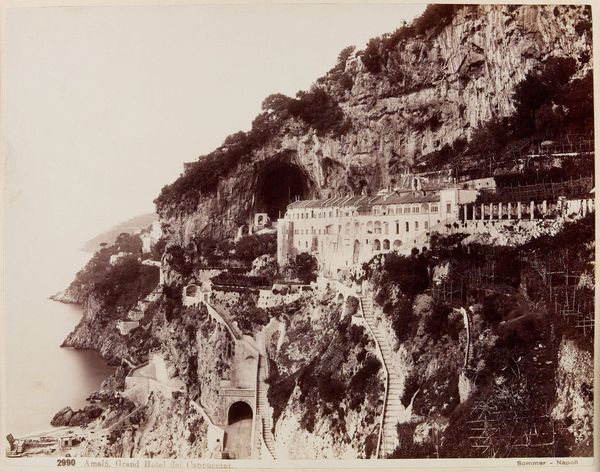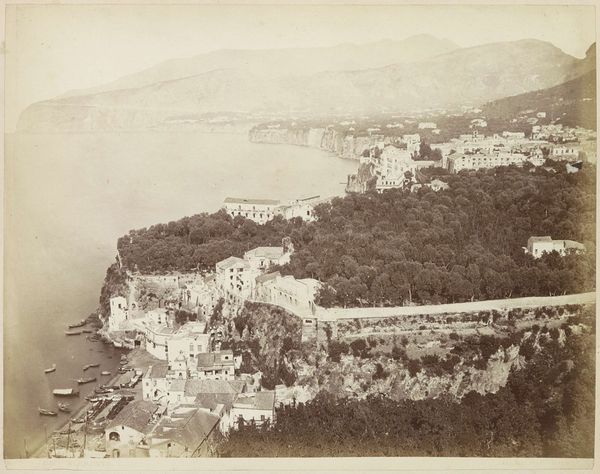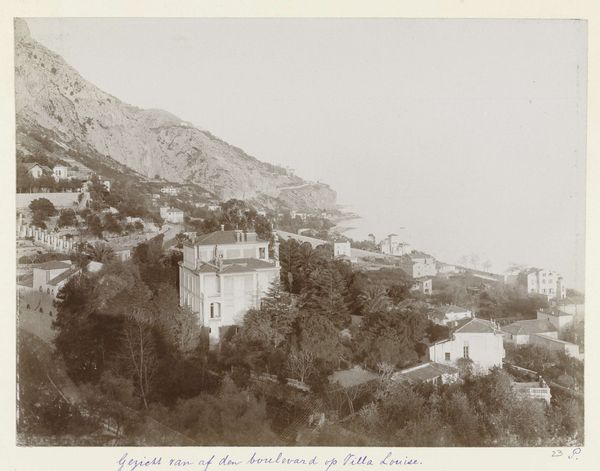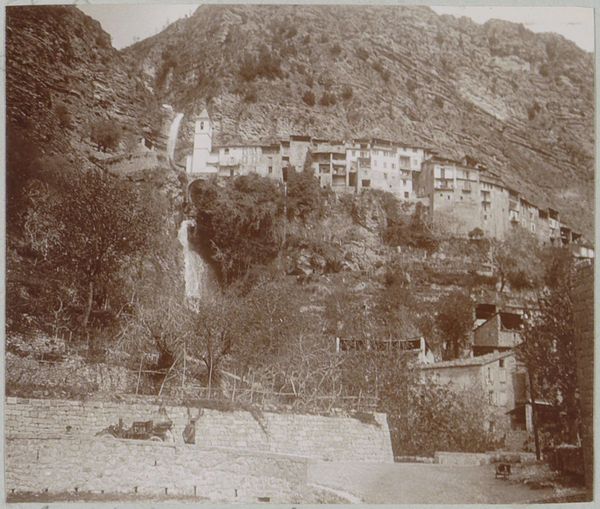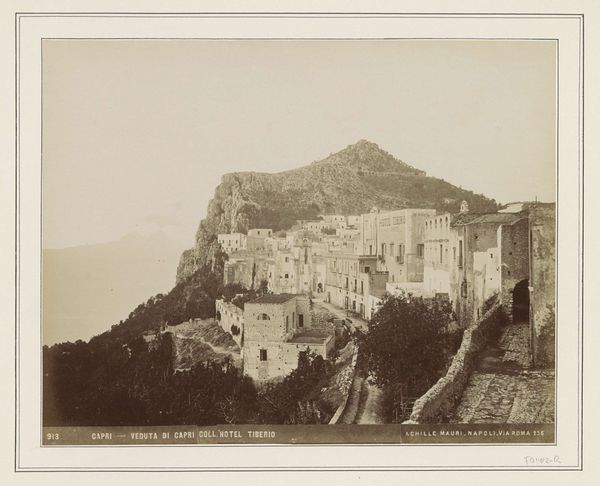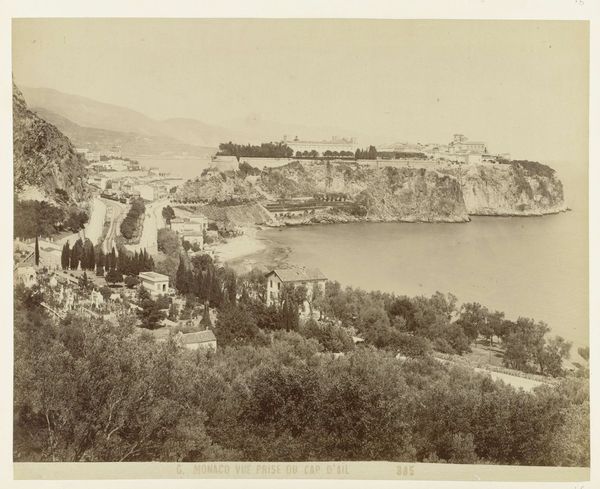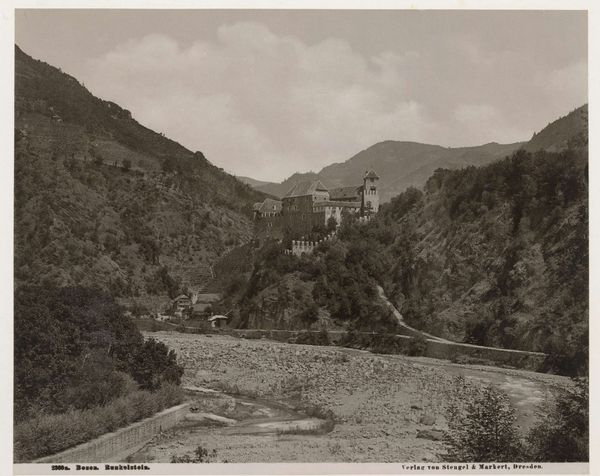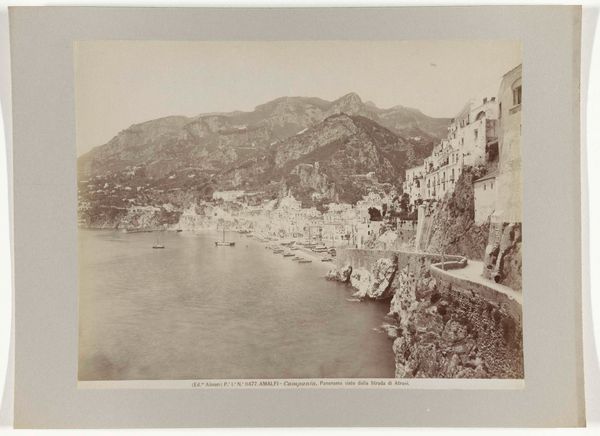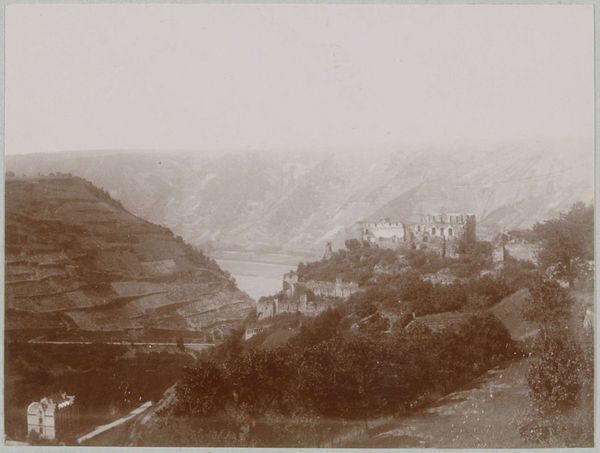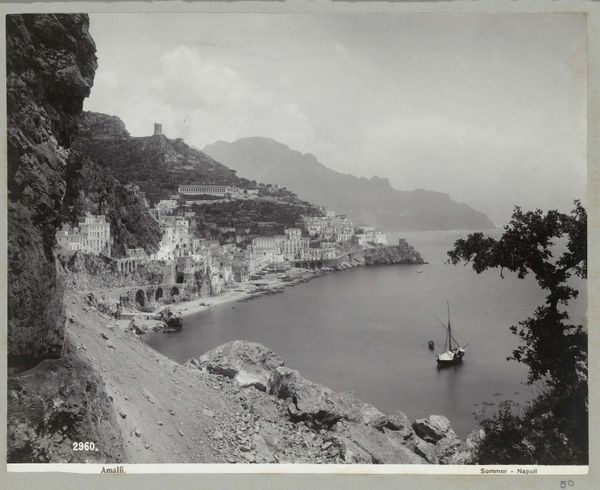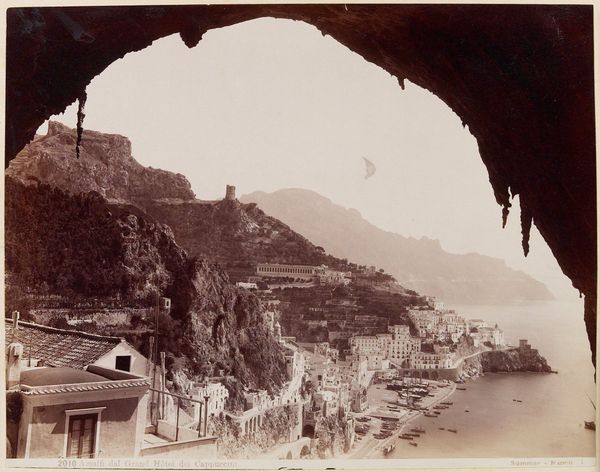
photography, albumen-print
#
landscape
#
photography
#
orientalism
#
cityscape
#
albumen-print
Dimensions: height 200 mm, width 252 mm, height 309 mm, width 507 mm
Copyright: Rijks Museum: Open Domain
Curator: Editor: This is Giorgio Sommer's "Amalfi," an albumen print likely made between 1888 and 1903. It’s incredible how he’s captured the hotel clinging to the cliffside! It almost feels like a stage set. What aspects of this image stand out to you the most? Curator: It is important to think about the process of creation; albumen prints demanded meticulous work, coating paper with egg whites, sensitizing it, exposing it to sunlight through a negative, then processing. Sommer wasn't just pointing and shooting; it's labor-intensive. Considering the travel involved, what level of clientele was being targeted with such views and vacation destinations? Editor: So you're saying the photograph itself, as a commodity, is intrinsically linked to the upper-class tourism it depicts? The production, in effect, mirrors the subject matter, as well as depends on their mutual continued relationship? Curator: Exactly! Consider how these photographs were disseminated. Albums became coveted possessions, reflecting social standing and refined taste. The materiality of the image--the albumen print itself--was significant. It signified exclusivity in terms of those in society capable of aquiring not only that view, but experiencing the location first hand. Are we really seeing an image of a place or a document reflecting existing social standards? Editor: I never really thought of landscape photography in that way. So, seeing "Amalfi" not just as art but as a form of early advertising interwoven with class and access, highlights how even landscape photography relies heavily on the surrounding structures, physical and economical, to create the artwork in the first place. Thank you! Curator: Precisely!
Comments
No comments
Be the first to comment and join the conversation on the ultimate creative platform.
